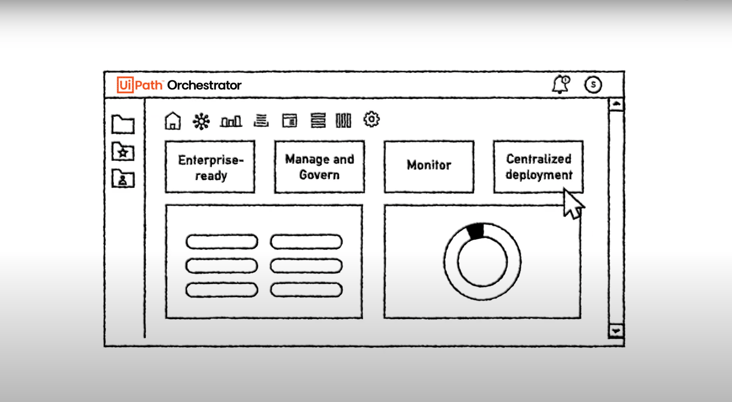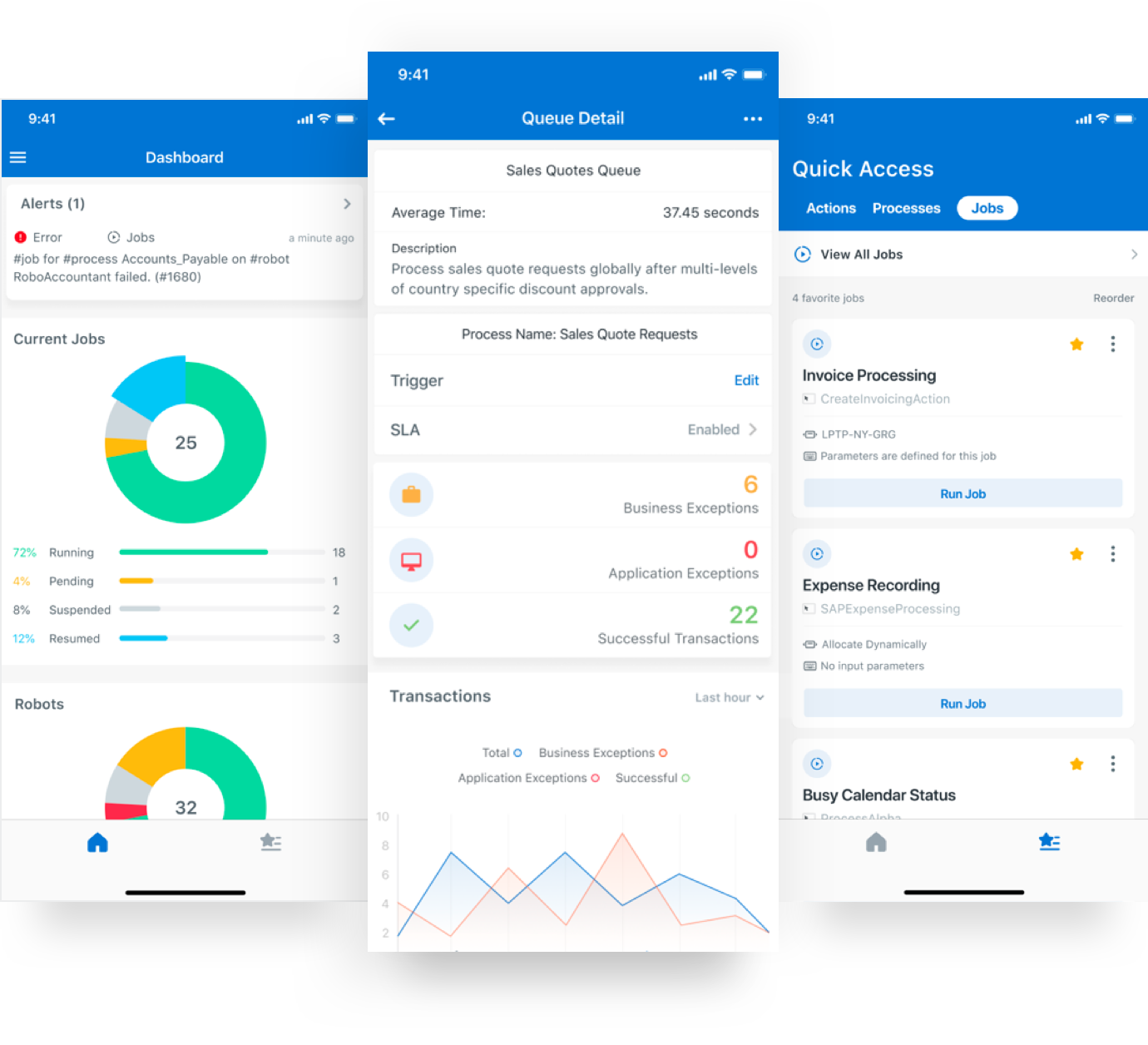UIPATH ORCHESTRATOR
Deploy and manage your enterprise robot workforce centrally
True enterprise-grade automation requires rich, powerful orchestration. UiPath Orchestrator gives you the power you need to provision, deploy, trigger, monitor, measure, and track the work of attended and unattended robots—so your entire digital workforce is secure and productive.
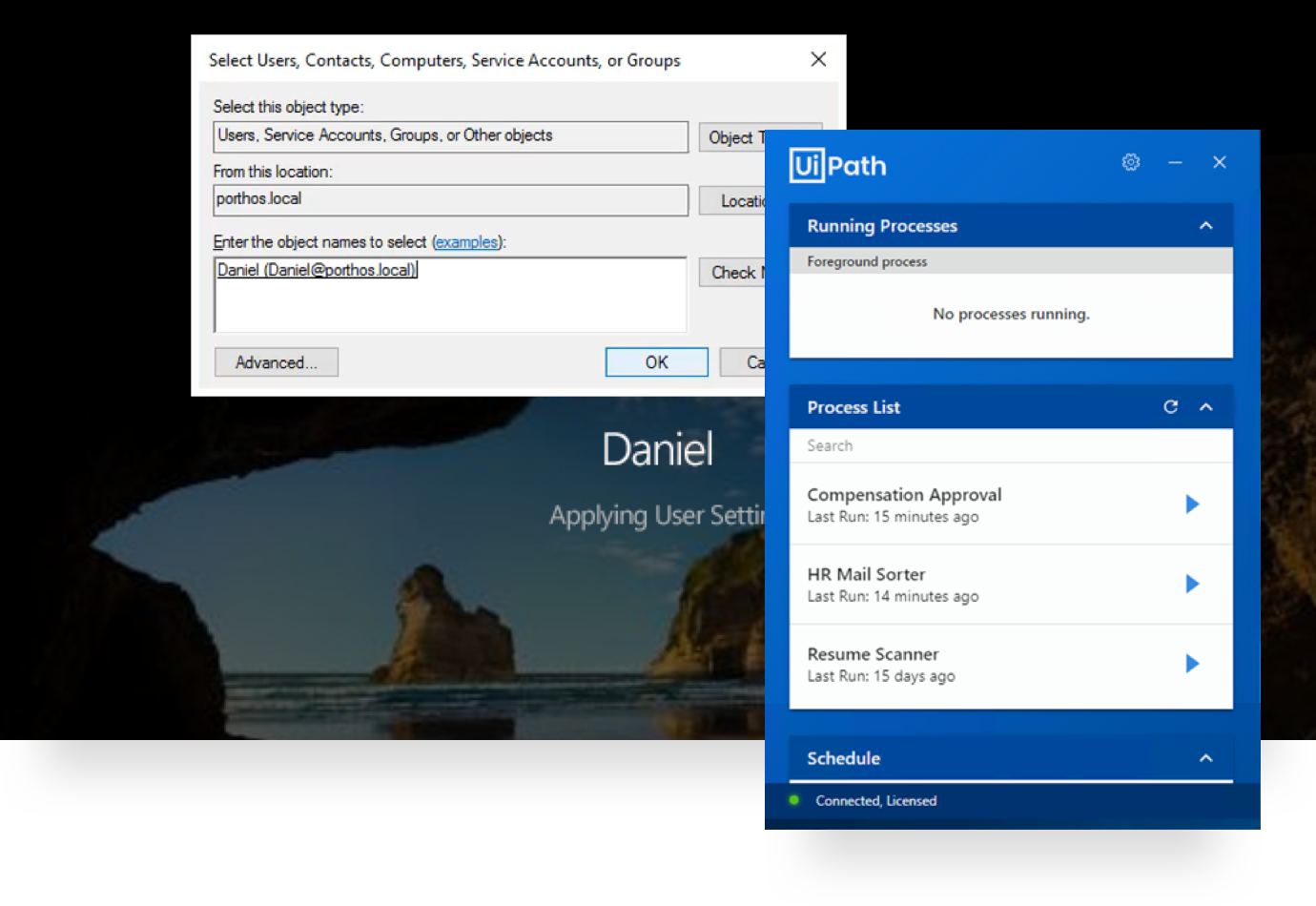
Bring down the Total Cost of Ownership
With zero-touch provisioning, pluggable enterprise credential stores, OAuth 2.0 authorization for third party apps and the power to deploy processes simply by adding users to Active Directory groups, scaling automation won’t tax your operations—or your operating budget.
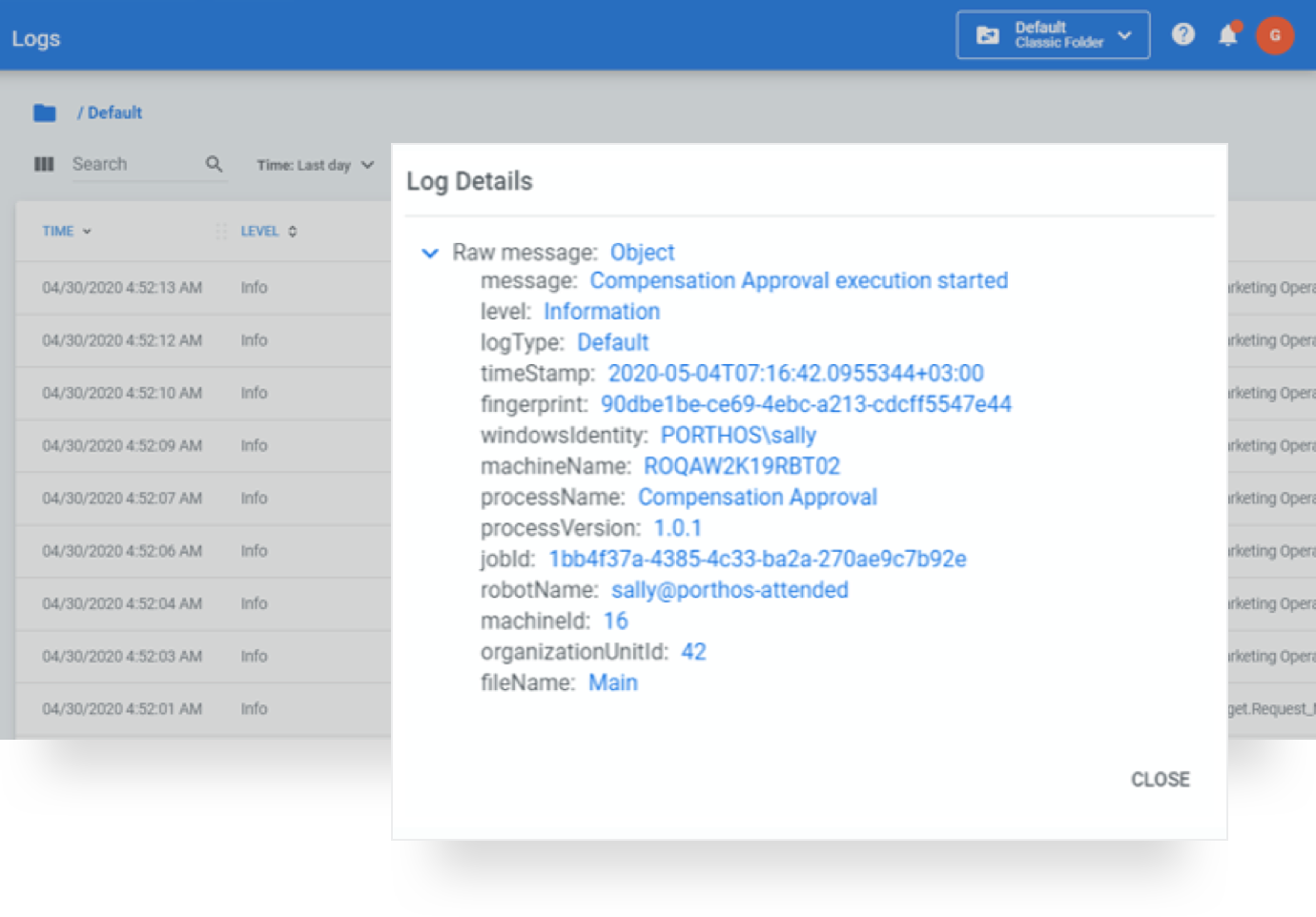
Keep compliant with a complete audit trail
Orchestrator tracks and logs everything every robot does, along with everything people do with robots, so you can keep compliant and secure. Drill-down dashboards and UiPath Insights give you full visibility from deployment to ROI.
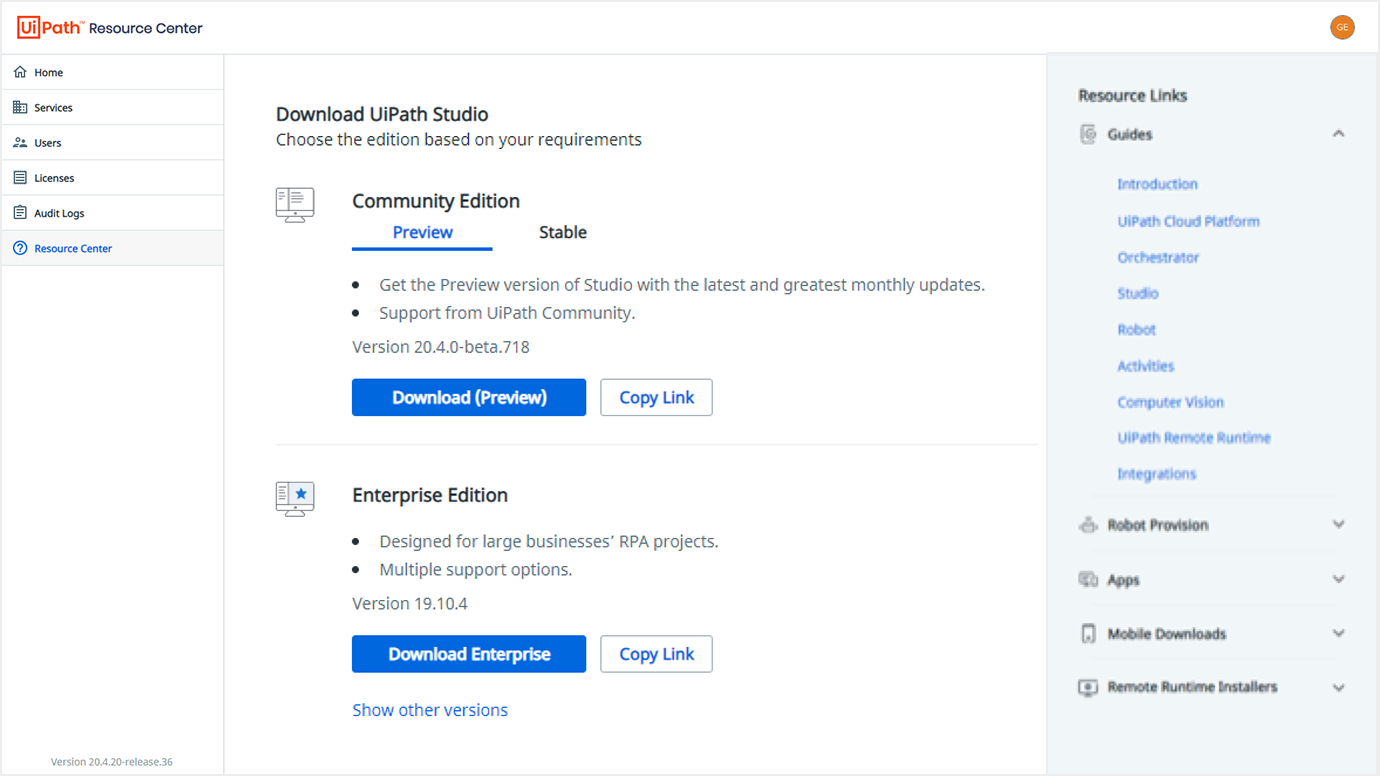
Open up great connections
Orchestrator lets you integrate with software and third-party products, gives you a range of deployment options, and brings you into a huge global RPA community and the UiPath Marketplace.
Discover how UiPath developers can build out platform API automation capabilities
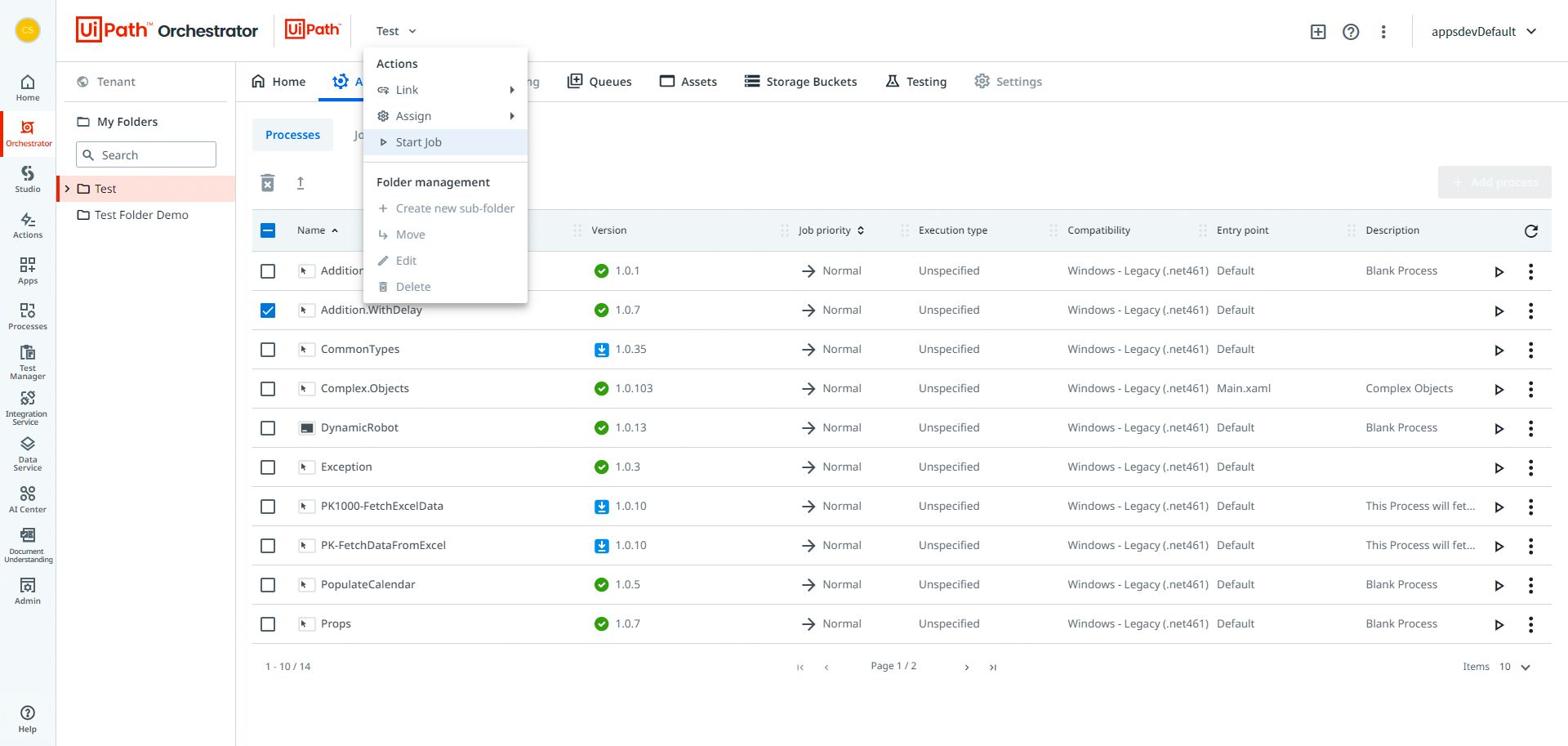
Easy access to all your enterprise automation
The new Orchestrator user interface is more compact, contextual, and intuitive. Get everything done faster—and give your mouse a break.
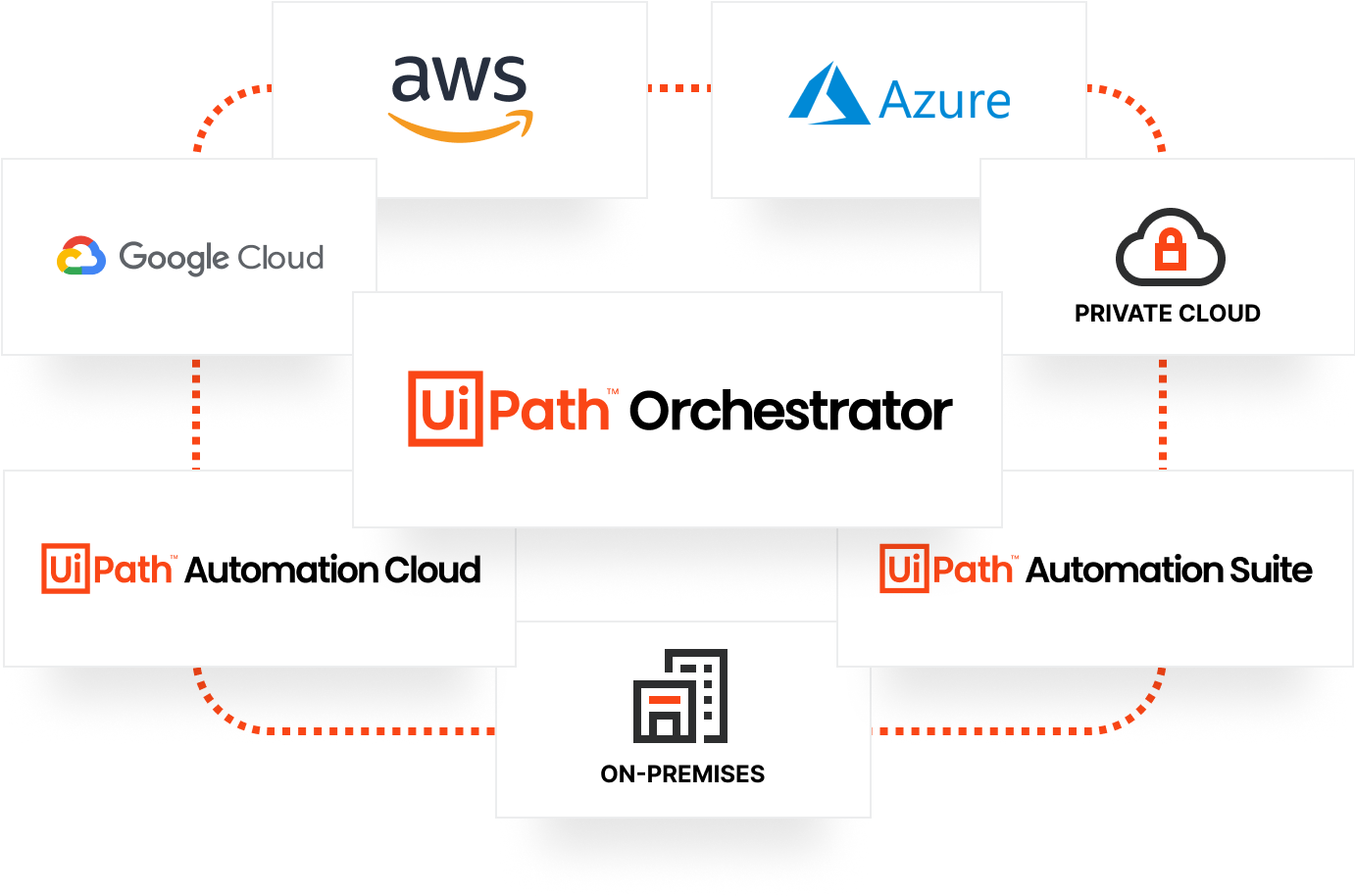
Cloud native deployment flexibility
Try UiPath Orchestrator instantly as SaaS from the UiPath Automation Cloud™ or on-premises, in virtual machines, in private or public cloud, Linux VM or as a cloud native single containerized suite via UiPath Automation Suite.
Try UiPath Orchestrator now
New in Orchestrator
Continuous improvements, predictably delivered, and backward-compatible.
Enhanced real-time monitoring
Low-latency monitoring, complete with SLA predictions, allow you to visualize the status of all your resources in real time – so you can act, debug, and optimize them more easily than ever before.
Historical monitoring
Filter historical data, schedule the delivery of a report to your email, or download the entire dashboard to review historical data without having to rely on third-party analytics.
API audit monitoring
Monitoring now provides an easy way to keep a close watch on your API usage and make sure you stay within the limit API requests per minute for all your tenants.
Video timeline
Combine the power of visual recordings with that of timestamps and underlying logs, allowing you to troubleshoot by jumping to an exact moment in the robot execution.
Support for new notification service
All users, regardless of their role, can make just-in-time, informed decisions from within Orchestrator with real-time, actionable notifications and a unified user experience in the new, platform-wide notification service.
New credential store - CyberArk® Conjur Cloud
Because security – and the flexibility of using your secrets management solution of choice – is a top priority for UiPath and org admins alike, CyberArk® Conjur Cloud is now available as a credential store from within Orchestrator.

Get Orchestrator your way with consistent user experience in any delivery mode
Orchestrator is tested to work with all supported robot versions. UiPath support options available for all delivery modes.
UiPath Automation Cloud™
SaaS with rapid provisioning
UiPath-managed
Updated by UiPath twice monthly
Uptime guarantee included for enterprise
UiPath Automation Suite
Install on-premises, Linux VM, public cloud
Customer-managed
Updated by customer
UiPath high availability add-on option

